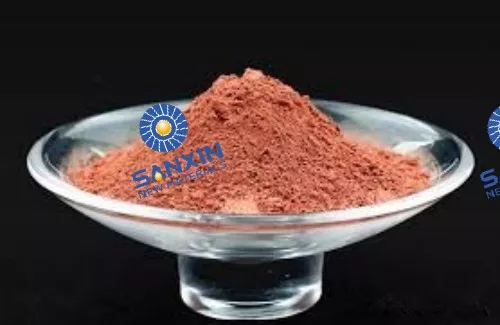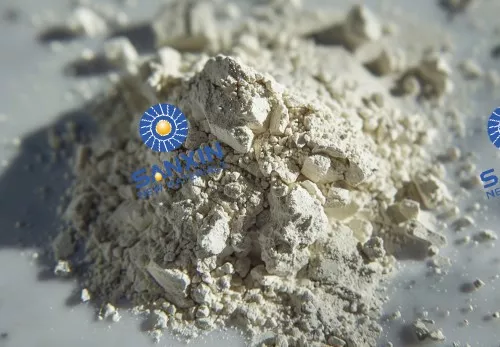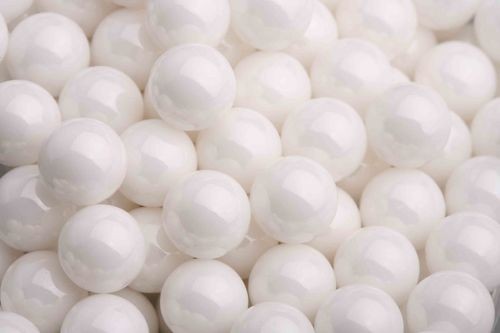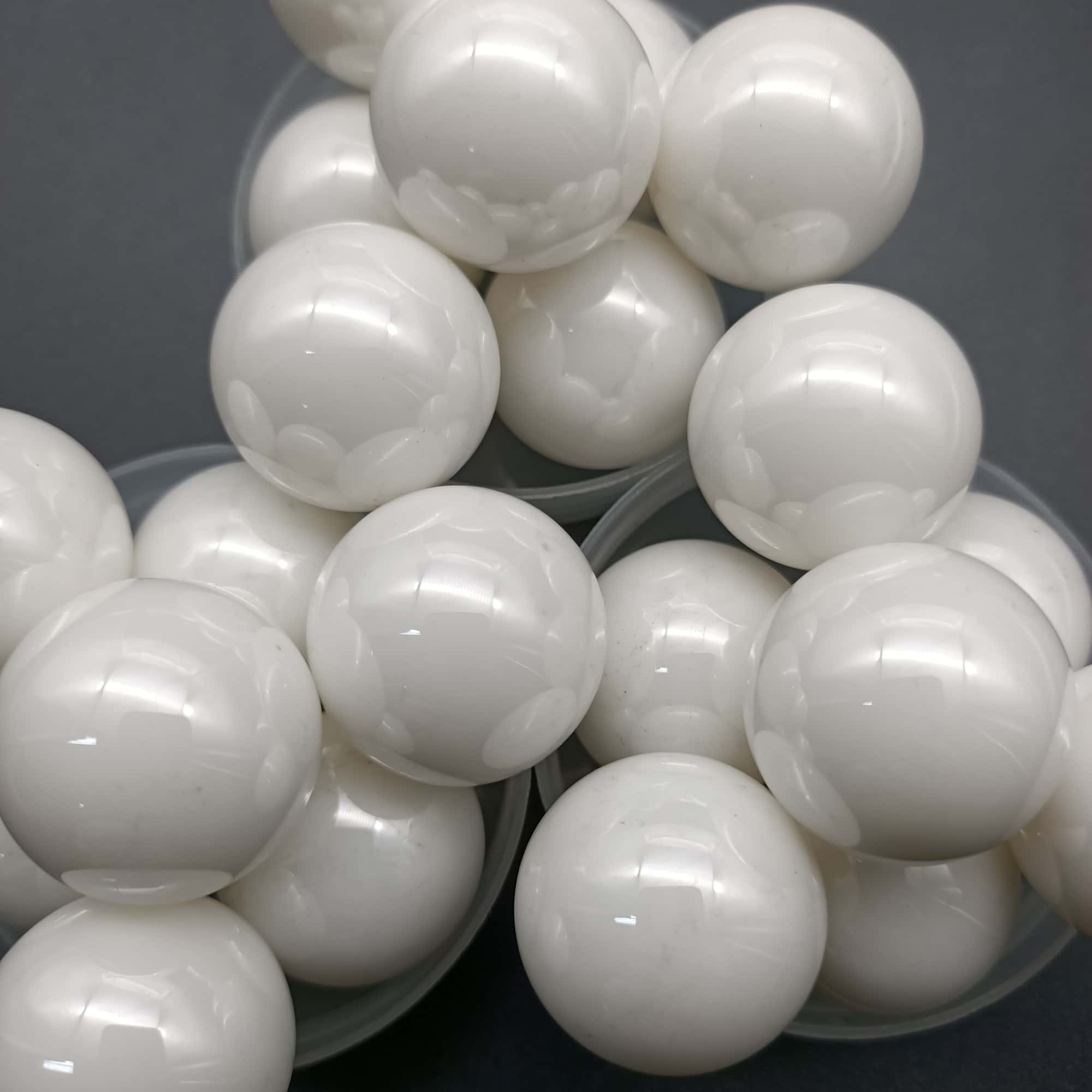
Rare earth polishing powders, particularly those based on cerium oxide (CeO₂), are indispensable in achieving ultra-precise surface finishes in industries such as semiconductors, optics, and electronics. The performance of these powders—defined by attributes like particle size, distribution, and dispersion stability—directly influences the efficiency and quality of the polishing process.
Zirconia beads have emerged as the preferred grinding medium in the preparation of rare earth polishing powders. Their superior hardness, low wear rate, and chemical stability make them ideal for high-purity and high-precision manufacturing requirements. This article delves into the application scenarios, working mechanisms, process optimization, and future development trends of zirconia beads in the production of rare earth polishing powders.
Rare earth polishing powders are primarily composed of cerium oxide (CeO₂) and are essential for achieving high-precision surface finishes. They are widely used in:
Semiconductor Wafer Polishing: Ensuring the flatness and smoothness required for integrated circuits.
Optical Lens Finishing: Achieving the clarity and precision necessary for high-quality lenses.
Flat-Panel Display Manufacturing: Providing the smooth surfaces needed for display technologies.
The quality of these powders directly affects the polishing efficiency and the surface quality of the workpieces. Key performance indicators include:
Particle Size and Distribution: Uniform particle sizes lead to consistent polishing results.
Dispersion Stability: Prevents agglomeration, ensuring even polishing.
Chemical Purity: High purity levels are crucial to avoid contamination during polishing processes.
Zirconia beads (ZrO₂ beads) possess characteristics that make them highly suitable for grinding applications:
Mohs Hardness: 7–8, providing the necessary hardness to grind rare earth materials effectively.
Density: 6.0–6.2 g/cm³, offering the mass required for efficient energy transfer during grinding.
Chemical Stability: Resistant to corrosion and chemical reactions, maintaining integrity during processing.
These properties enable zirconia beads to effectively break down aggregates of rare earth powders while minimizing contamination.
Compared to traditional grinding media like glass or steel beads, zirconia beads offer:
Lower Wear Rates: Reducing the introduction of impurities into the polishing powders.
Higher Grinding Efficiency: Due to their density and hardness.
Chemical Inertness: Preventing unwanted reactions during the grinding process.

The production begins with extracting rare earth elements from ores such as bastnasite and monazite. Processes like acid leaching, solvent extraction, and precipitation are employed to obtain soluble salts, typically rare earth nitrates or chlorides. High-purity raw materials are crucial, necessitating the removal of impurities like iron (Fe), aluminum (Al), and thorium (Th) through purification steps such as ion-exchange and crystallization.
The co-precipitation method is commonly used to obtain rare earth polishing powder precursors. In this process, rare earth salt solutions react with precipitants like ammonia water (NH₃·H₂O) or ammonium bicarbonate (NH₄HCO₃). For example:
Ce(NO3)3+3NH3⋅H2O→Ce(OH)3↓+3NH4NO3
Alternatively, the homogeneous precipitation method utilizes urea hydrolysis to slowly release precipitants, producing precursors with more uniform particle sizes.
The precipitated precursors, such as cerium hydroxide (Ce(OH)₃), are calcined at high temperatures (600–1000°C) to convert them into rare earth oxides like cerium oxide (CeO₂). The calcination temperature and duration significantly affect the crystal structure and particle aggregation, influencing the final powder's properties.
To enhance dispersion and chemical activity, surface modification is performed using agents like silane coupling agents, surfactants, or polymers. This step improves the interaction between the powder and the polishing medium, prevents re-agglomeration, and optimizes polishing performance.
Zirconia beads are primarily used to grind two types of materials:
Initial Rare Earth Oxide Powders: Post-calcination powders often contain agglomerates and uneven particle sizes, typically in the micron range.
High-End Polishing Applications: For semiconductors and optical glasses, powders need to be ground to sub-micron (0.1–1μm) or even nano-level (<100nm) sizes.
Bead Mills (Sand Mills): Commonly used for large-scale production, where a high-speed rotating agitator shaft drives the zirconia beads within the grinding chamber.
Planetary Ball Mills: Suitable for small-scale production or laboratory research, utilizing centrifugal force to achieve high-fineness grinding.
Coarse Grinding: Larger-diameter beads (1–3mm) provide higher impact energy for efficient fragmentation.
Ultra-Fine Grinding: Smaller-diameter beads (0.1–0.5mm) generate stronger shear forces for fine dispersion.
The filling rate of zirconia beads in the grinding equipment also affects efficiency, with a recommended rate of 60–80% of the tank volume.
Post-calcination, rare earth oxide particles tend to form hard agglomerates. Zirconia beads, through high-speed impact, effectively break these agglomerates, separating primary particles. For instance, processing cerium oxide powders with an initial D50 of 5μm using zirconia beads in a bead mill can reduce the D50 to 0.5μm, enhancing polishing efficiency by over 30%.
The shear force generated by zirconia beads, combined with dispersants, creates electrostatic repulsion or steric hindrance on the powder particles' surfaces. This mechanism prevents re-agglomeration, ensuring consistent dispersion.
Compared to traditional media, zirconia beads have a much lower wear rate, ensuring no impurities like iron or sodium are introduced during grinding—a critical factor in high-purity applications like semiconductor manufacturing.
Ultra-fine grinding increases surface defects (e.g., lattice distortion) in rare earth polishing powder particles, enhancing chemical reactivity. In glass substrate polishing, nano-sized CeO₂ particles react with the glass surface through redox reactions (Ce⁴⁺/Ce³⁺), softening the glass. The mechanical action of the particles then removes the softened debris, achieving a synergistic effect of chemical corrosion and physical abrasion.

3Y-TZP (3mol% Y₂O₃-Stabilized Tetragonal Zirconia Polycrystal): Offers high strength and excellent wear resistance, suitable for most grinding processes.
Fully-Stabilized Cubic Zirconia (e.g., 8Y-CSZ): Provides good high-temperature stability, suitable for processes requiring resistance to strong acids or alkalis.
The density of zirconia beads (6.0–6.2 g/cm³) should match the grinding slurry's density. A significant density difference can cause beads to sink or float, resulting in uneven grinding.
pH Regulation: Adjusting the slurry to a weakly alkaline environment (pH = 9–11) imparts a negative charge to powder particles, enhancing electrostatic repulsion and preventing aggregation.
Dispersant Selection: Dispersants like polyacrylic acid (PAA) and sodium hexametaphosphate adsorb onto powder particles, forming an electric double-layer or steric hindrance, maintaining dispersion stability.
Despite zirconia beads' low wear rate (<0.01% per hour), prolonged use generates tiny debris composed mainly of ZrO₂ and Y₂O₃.
Regular Screening: Periodic screening removes worn-out beads and replenishes new ones to maintain grinding efficiency.
Contamination Prevention: In high-purity applications, zirconia membrane filtration removes debris generated during grinding, ensuring the polishing powders remain uncontaminated.
A typical production process involves:
Raw Material Extraction: Processing rare earth ores to obtain cerium-rich nitrate solution with over 99.5% purity.
Precipitation: Adding ammonium bicarbonate to the cerium nitrate solution to precipitate cerium carbonate (Ce₂(CO₃)₃).
Calcination: Calcining the cerium carbonate precursor at 800°C for 3 hours to form cerium oxide powder with an initial D50 of about 5μm.
Pre-Grinding: Using 2mm zirconia beads in a bead mill to pre-grind the powder for 2 hours, reducing the D50 to around 1μm.
Ultra-Fine Grinding: Employing 0.3mm zirconia beads for an additional 8-hour grinding process, achieving a final D50 of 80nm.
Surface Modification: Treating the ground powder with a silane coupling agent to improve dispersion in the polishing slurry.
This process, utilizing zirconia beads at different stages, produces high-quality cerium oxide polishing powder meeting the stringent requirements of sapphire substrate polishing, ensuring a surface roughness (Ra) of less than 0.5nm.

Innovative zirconia beads are being engineered to include multifunctional features. For instance, some beads are coated with anti-fouling materials to resist chemical buildup or surface damage during extended grinding. Others are embedded with magnetic particles for easy separation and recycling after use. These advanced materials not only enhance grinding efficiency but also simplify downstream processing, reducing production downtime and operational costs.
As the demand for environmentally friendly manufacturing rises, zirconia bead production is also evolving. Manufacturers are exploring cleaner sintering technologies and recyclable packaging for beads. Moreover, beads with ultra-low wear rates minimize zirconia loss and reduce the environmental footprint of the polishing powder production process. The use of recycled zirconia from industrial byproducts (like spent catalyst materials or zircon sand) is also gaining momentum.
Industry 4.0 is reshaping how rare earth polishing powders are manufactured. Integration of zirconia bead grinding systems with smart sensors and AI-based monitoring tools allows for:
Real-Time Quality Control: Monitoring particle size and bead wear in real-time.
Predictive Maintenance: Alerting operators before grinding equipment fails.
Process Optimization: Adjusting grinding parameters on the fly based on performance metrics and material feedback.
By combining zirconia bead technology with automation and data analytics, manufacturers can achieve unprecedented consistency and efficiency in polishing powder production.
In the semiconductor sector, wafer-level packaging, MEMS devices, and chip dicing require mirror-like surfaces. Nano-grade rare earth polishing powders, ground with zirconia beads, deliver ultra-smooth finishes without micro-defects, contributing to higher chip yields and performance.
Precision lenses, prisms, and camera components demand tight tolerances and perfect transparency. Using cerium oxide powders ground with zirconia beads ensures uniform polishing without introducing scratches or contamination.
From smartphone screens to LCD and OLED panels, the glass substrates used in displays must be polished to extreme flatness and clarity. Zirconia bead-assisted grinding produces polishing powders with ideal rheology and dispersion characteristics for automated polishing lines.
Polishing silicon wafers used in solar panels benefits from uniform, high-purity polishing powders. Zirconia beads contribute to this by enabling the preparation of ultra-clean cerium-based compounds that do not compromise light absorption or electric conductivity.
Advanced ceramics, mirrors, and optical systems used in aerospace and defense rely on precise surface finishes. Here, rare earth polishing powders ground with zirconia media ensure dimensional accuracy, structural integrity, and high reflectivity.
| Grinding Media | Density (g/cm³) | Hardness (Mohs) | Wear Rate | Contamination Risk | Cost | Suitability for Rare Earth Powders |
|---|---|---|---|---|---|---|
| Zirconia Beads | 6.0–6.2 | 7–8 | Very Low | Minimal | Medium | ★★★★★ |
| Glass Beads | 2.4–2.6 | 5–6 | High | High | Low | ★★☆☆☆ |
| Steel Beads | 7.8 | 5–6 | Moderate | High (Fe contamination) | Medium | ★★★☆☆ |
| Alumina Beads | 3.5–4.0 | 8–9 | Low | Moderate | Medium | ★★★★☆ |
| Silicon Nitride | 3.2–3.3 | 9–10 | Very Low | Minimal | High | ★★★★☆ |
Conclusion: Zirconia beads offer the best balance between performance, contamination control, and cost-efficiency—making them the optimal choice for grinding rare earth polishing powders.
Pre-Washing: Always wash new zirconia beads before use to remove any dust or manufacturing residues.
Bead Replenishment: Check and replenish beads periodically to maintain consistent bead load and prevent grinding efficiency drops.
Avoid Over-Grinding: Excessive grinding can lead to particle aggregation due to high surface energy; monitor endpoint carefully.
Use of Compatible Dispersants: Select dispersants that work synergistically with zirconia bead surfaces to enhance dispersion without affecting purity.
Temperature Control: Grinding generates heat—use a cooling jacket or control system to maintain stable slurry temperatures.
| Issue | Cause | Solution |
Poor Dispersion | Inadequate dispersant or wrong pH | Adjust pH to 9–11 and optimize dispersant dosage |
Bead Sedimentation | Density mismatch | Match bead and slurry densities closely |
Bead Breakage | Overpressure or incompatible equipment | Reduce agitator speed, use proper bead diameter |
Particle Re-agglomeration | Over-grinding or insufficient stabilizer | Use steric/electrostatic stabilizers, monitor endpoint |
Zirconia beads are central to the preparation of rare earth polishing powders. Their high density, hardness, and chemical stability ensure consistent, high-purity grinding, meeting the stringent requirements of semiconductor, optics, display, and photovoltaic industries.
By optimizing process parameters and embracing smart manufacturing technologies, manufacturers can further enhance powder quality and process efficiency. As industry trends move toward finer particles, greener practices, and higher performance, zirconia beads will remain the cornerstone of high-end polishing powder production.
If you're looking to elevate the quality of your rare earth polishing powder or optimize your production line for precision, consistency, and purity—zirconia beads are your best investment.

Submit your demand,
we will contact you ASAP.

Sanxin New Materials Co., Ltd. focus on producing and selling ceramic beads and parts such as grinding media, blasting beads, bearing ball, structure part, ceramic wear-resistant liners, Nanoparticles Nano Powder

